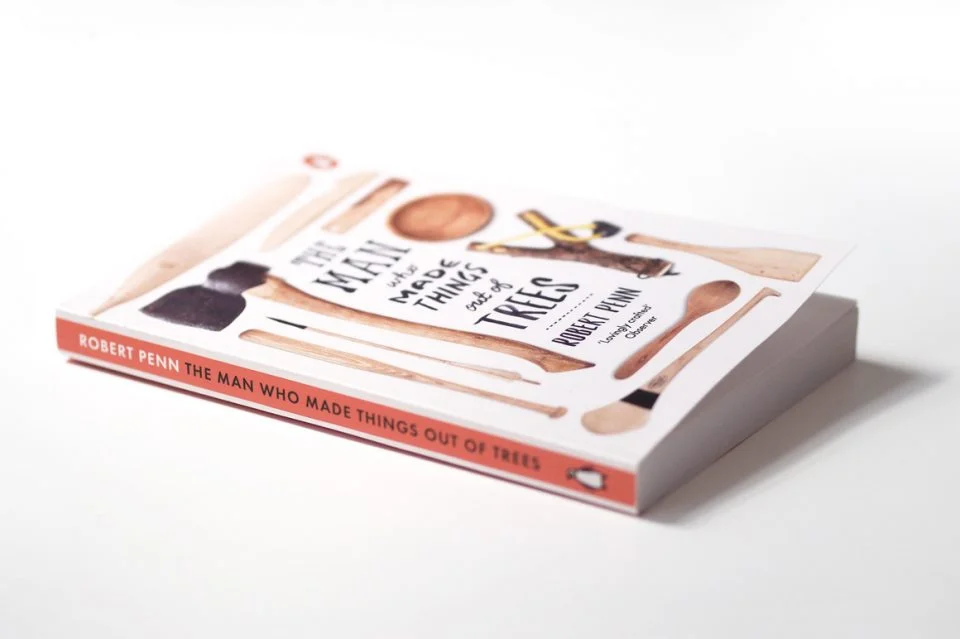I’m going to come clean with you all. For some reason March was a bit light for me on reading books related to creativity and making. I read a great novel Five Rivers met on a Wooded Plain by Barney Norris, dipped in and out of Neil Gaiman’s collection of non-fiction writing The View from the Cheap Seats, was a bit non-plussed by The Path and its claim that it was “a new way to think about everything” and I started the fascinating account of existentialist philosophy At the Existentialist Cafe by Sarah Bakewell. But for some reason I didn’t pick up anything directly related to my creative practice. So, here is a review I wrote a while ago of The Man who Made Things out of Trees by Robert Penn but never got around to sharing. Next month I’ll do better, promise!
……
I picked up the book and knew immediately that a friend would like it. That an exploration of the possibilities from one tree would appeal to her. I knew that it would hold descriptions of the connection between material and process, material and object, material and craftsperson, that would make sense to her maker’s sensibility. I was excited to read it, so that I could send it on, with glowing praises and hopes that she hadn’t yet discovered it. I read the back cover, and smiled to see how Grant Gibson was ‘smitten’ by it. The promise of becoming completely absorbed in the prose. Of falling in love with a tree and the objects that it would produce.
And although I knew, from reading the back, that the author didn’t actually make the objects himself, and that it would be unreasonable for me to expect that he would, still I felt a little disappointed that he didn’t. I felt the title ‘the man who made things out of trees’ was a little false. The truth was different: He enlisted the expertise of craftspeople, their skills honed through years of experience, and that was wonderful. Their attention to detail, their sympathy with the material, their knowledge evident in each interaction he had with them. I learnt a lot. But I didn’t feel moved. I didn’t learn what it felt like to hold the wood, to consider it and to change it. To uncover the form in the formless branch or plank. There is a very close relationship between maker and object, and I wanted to hear what that was like. I wanted to understand what it is like to make things out of trees. Instead I understood that many of these skills are in danger of being lost, that ash as a material survives only when it is the best option for the finished object, and there are fewer examples of that as the twenty-first century progresses. I am saddened by that. But I am also saddened that the author didn’t take the opportunity to learn to make something of his own from his tree, and to become part of the narrative himself.
[update: having failed to read a creative-adjacent book in March, I realised that I’d also given my copy of The Man who… to Oxfam, so the image above is taken from another source. It also turns out that the inaugural session of Crafts Magazine’s Book Club was with Robert Penn, so if you fancy hearing that conversation take a look here]
